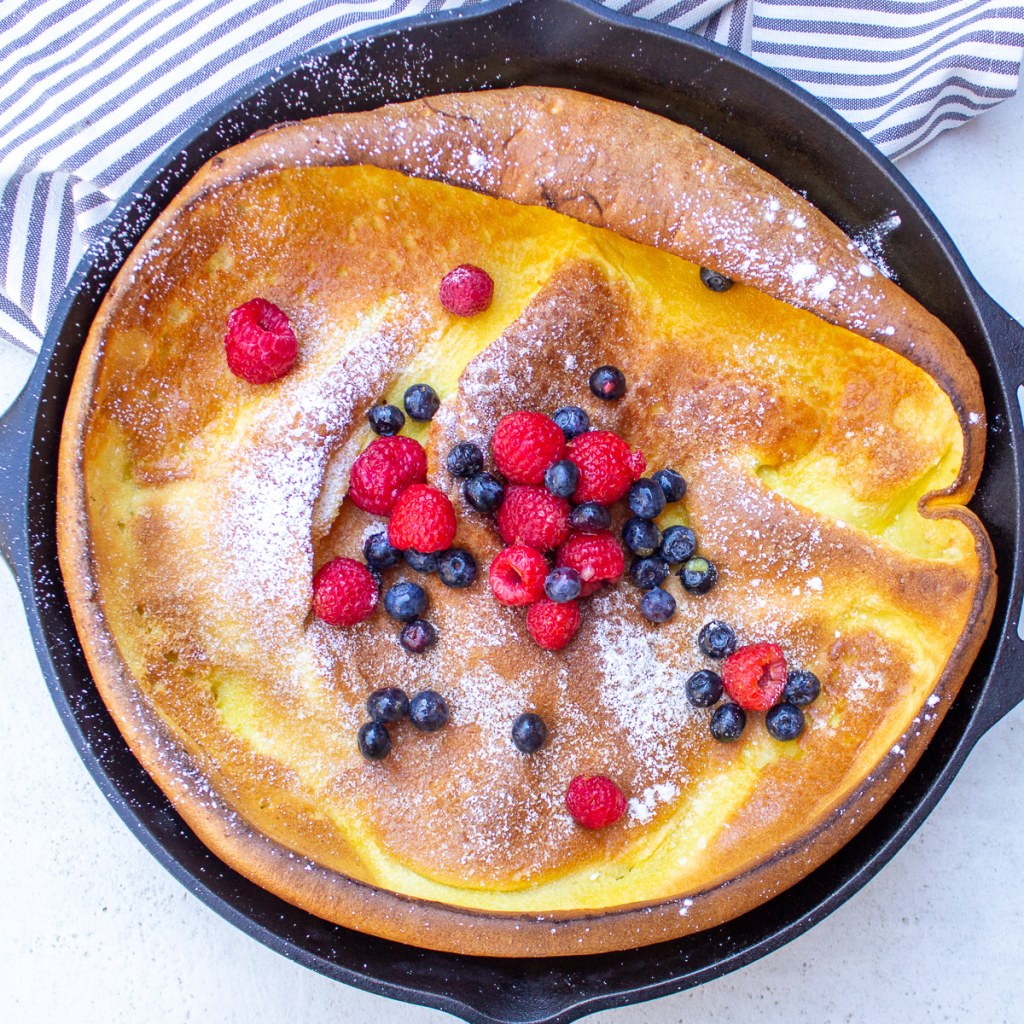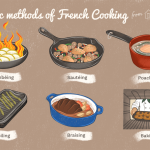Mastering Cooking Techniques In The Netherlands: Your Key To Culinary Excellence!
Cooking Techniques in Netherlands
Introduction
Dear Readers,
2 Picture Gallery: Mastering Cooking Techniques In The Netherlands: Your Key To Culinary Excellence!


Welcome to our article on cooking techniques in the Netherlands. In this guide, we will explore the unique culinary traditions and practices of this beautiful country. The Netherlands may not be the first place that comes to mind when thinking about world-renowned cuisine, but it has a rich gastronomic heritage that is worth discovering.

Image Source: twokooksinthekitchen.com
In this article, we will delve into the various cooking techniques used in the Netherlands, from traditional methods passed down through generations to modern innovations. By the end, you will have a deeper understanding of the cooking techniques that make Dutch cuisine so special.
So sit back, relax, and let us take you on a culinary journey through the cooking techniques in the Netherlands!
Table of Contents
1. What Are Cooking Techniques?

Image Source: expatica.com
2. Traditional Dutch Cooking Techniques
3. Modern Innovations in Dutch Cuisine
4. Who Uses These Techniques?
5. When Are These Techniques Used?
6. Where Are These Techniques Applied?
7. Why Are These Techniques Important?
8. How to Incorporate Dutch Cooking Techniques into Your Own Kitchen?
9. Advantages and Disadvantages of Dutch Cooking Techniques
10. Frequently Asked Questions (FAQ)
11. Conclusion
12. Final Remarks
What Are Cooking Techniques?
Cooking techniques refer to the methods and processes used in preparing and cooking food. These techniques can vary greatly depending on the culture, region, and traditions of a particular place. In the Netherlands, cooking techniques have evolved over time, incorporating influences from neighboring countries such as Germany and Belgium.
Some common cooking techniques used in the Netherlands include boiling, baking, frying, and stewing. These techniques are often used in combination to create delicious and flavorful dishes.
Now, let’s explore some of the traditional Dutch cooking techniques that have stood the test of time.
Traditional Dutch Cooking Techniques
1. Boiling: Boiling is a popular cooking technique in the Netherlands, especially for vegetables and potatoes. Dutch cuisine often features stamppot, a dish made by boiling potatoes and mashing them with vegetables like kale or sauerkraut.
2. Baking: Baking is another common cooking technique in the Netherlands, particularly for pastries and bread. Dutch apple pie, known as appeltaart, is a beloved dessert made by baking sliced apples with a sweet pastry crust.
3. Frying: Frying is widely used in Dutch cuisine, with bitterballen being a popular example. These deep-fried meat-based snacks are often enjoyed with mustard and are a staple at Dutch borrels (drinks and snacks gatherings).
4. Stewing: Stewing is a slow cooking technique that is commonly used for hearty dishes in the Netherlands. Hachee, a traditional Dutch beef stew, is a flavorful dish made by slowly cooking beef with onions, vinegar, and spices.
5. Smoking: Smoking is a traditional technique used to preserve and flavor fish in the Netherlands. Popular smoked fish varieties include herring and eel, which are often enjoyed as a snack or incorporated into various dishes.
6. Grilling: Grilling is a favorite cooking technique in the Netherlands, especially during the summer months. Barbecues or barbecues are a common sight, with people gathering to grill meats, vegetables, and even cheese.
7. Pickling: Pickling is a method of preserving foods in a solution of vinegar, salt, and spices. Pickled herring is a delicacy in the Netherlands, enjoyed with onions and pickles.
Who Uses These Techniques?
The cooking techniques mentioned above are used by both professional chefs and home cooks in the Netherlands. Dutch cuisine celebrates the use of fresh, local ingredients, and these techniques are employed by anyone looking to create delicious and authentic Dutch dishes.
Whether it’s a Michelin-starred restaurant or a family kitchen, the cooking techniques in the Netherlands are accessible to all who appreciate good food.
When Are These Techniques Used?
The cooking techniques in the Netherlands are used throughout the year, but some dishes are more closely associated with specific seasons or holidays. For example, boerenkoolstamppot, a dish made with mashed potatoes and kale, is often enjoyed during the cold winter months.
Moreover, certain cooking techniques, like grilling, are more popular during the summer when the weather is conducive to outdoor dining and barbecues.
Where Are These Techniques Applied?
These cooking techniques are applied in various settings across the Netherlands. From professional restaurant kitchens to home kitchens, Dutch cooking techniques can be found throughout the country.
The Netherlands also has a vibrant street food scene where you can find local delicacies prepared using these techniques. Market stalls and food festivals often showcase the diversity and uniqueness of Dutch cuisine.
Why Are These Techniques Important?
The cooking techniques in the Netherlands are important for preserving the country’s culinary heritage and passing it on to future generations. They showcase the creativity and resourcefulness of Dutch cooks, who have adapted their techniques to suit the local ingredients and climate.
Furthermore, these techniques play a vital role in creating the distinct flavors and textures that define Dutch cuisine. Whether it’s the comforting taste of a stamppot or the rich smokiness of a smoked fish, these techniques contribute to the unique culinary identity of the Netherlands.
How to Incorporate Dutch Cooking Techniques into Your Own Kitchen?
If you’re interested in incorporating Dutch cooking techniques into your own kitchen, here are a few tips to get you started:
1. Experiment with traditional recipes: Try your hand at classic Dutch dishes like erwtensoep (split pea soup) or rijsttafel (rice table) to familiarize yourself with the cooking techniques used in Dutch cuisine.
2. Source local ingredients: Dutch cuisine relies heavily on fresh, local ingredients. Visit farmers’ markets or specialty stores to find authentic Dutch produce and ingredients for your dishes.
3. Embrace slow cooking: Many traditional Dutch dishes require slow cooking, which allows flavors to develop and meld together. Invest in a good Dutch oven or slow cooker to achieve the best results.
4. Try smoking: If you’re feeling adventurous, try smoking your own fish or meats at home. There are various methods and equipment available for home smoking, allowing you to recreate the flavors of traditional Dutch smoked foods.
5. Attend cooking workshops or classes: Joining a cooking workshop or class focused on Dutch cuisine can provide valuable hands-on experience and guidance from expert chefs.
By exploring these techniques and incorporating them into your own cooking repertoire, you can bring a taste of the Netherlands to your kitchen.
Advantages and Disadvantages of Dutch Cooking Techniques
Dutch cooking techniques offer both advantages and disadvantages when it comes to preparing food. Let’s take a closer look:
Advantages:
1. Preservation: Techniques like smoking and pickling allow for the preservation of food, extending its shelf life and reducing waste.
2. Flavor development: Slow cooking techniques, such as stewing, enhance the flavors of ingredients, resulting in rich and complex taste profiles.
3. Resourcefulness: Dutch cooking techniques often make use of locally available ingredients, promoting sustainability and supporting local agriculture.
Disadvantages:
1. Time-consuming: Some traditional Dutch dishes require long cooking times, which may not be suitable for those with busy schedules.
2. Ingredient availability: Certain Dutch ingredients may be challenging to find outside of the Netherlands, making it difficult to recreate authentic dishes.
3. Dietary restrictions: Dutch cuisine can be heavy on meats and dairy, which may pose challenges for those with dietary restrictions or preferences.
Frequently Asked Questions (FAQ)
1. Is Dutch cuisine similar to German cuisine?
While there are some similarities between Dutch and German cuisine, each has its own unique dishes and flavors. Dutch cuisine is known for its love of potatoes, cheese, and seafood.
2. Are there any vegetarian dishes in Dutch cuisine?
Absolutely! Vegetarian options in Dutch cuisine include dishes like boerenkoolstamppot (mashed potatoes with kale) and groentesoep (vegetable soup).
3. What is the national dish of the Netherlands?
There isn’t one official national dish, but some popular Dutch dishes include haring (herring), erwtensoep (split pea soup), and stroopwafels (syrup waffles).
4. Are there any Dutch cooking traditions for holidays?
Yes, there are several Dutch cooking traditions associated with holidays. For example, oliebollen (deep-fried doughnuts) are traditionally eaten on New Year’s Eve.
5. Can Dutch cooking techniques be adapted for other cuisines?
Absolutely! Dutch cooking techniques can be adapted and incorporated into various cuisines to add a unique twist to your dishes. Experimentation and creativity are key!
Conclusion
In conclusion, the cooking techniques in the Netherlands offer a glimpse into the rich culinary traditions of this fascinating country. From boiling and baking to smoking and pickling, these techniques contribute to the diverse flavors and textures that define Dutch cuisine.
By exploring these techniques and incorporating them into your own cooking, you can bring the taste of the Netherlands to your kitchen. Whether you’re a seasoned chef or a home cook, there is something for everyone to enjoy in the world of Dutch cuisine.
Final Remarks
Dear Readers,
We hope this article has provided you with valuable insights into the cooking techniques in the Netherlands. As you embark on your culinary journey, remember to embrace the flavors, traditions, and creativity that make Dutch cuisine so special.
Whether you’re trying a traditional Dutch dish for the first time or experimenting with your own twist on a classic recipe, we encourage you to savor every bite and enjoy the journey.
Happy cooking!
This post topic: Cooking Techniques

